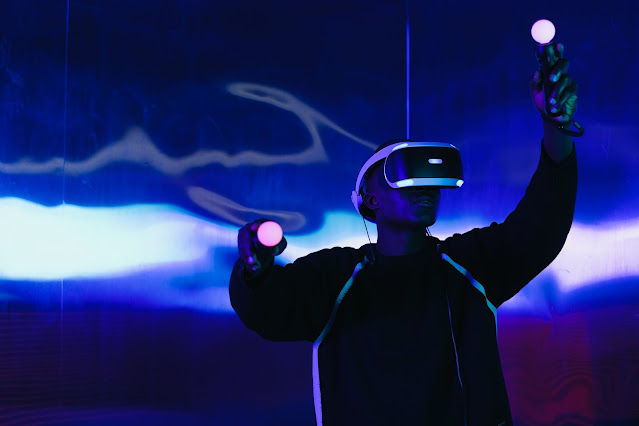The future of virtual and augmented reality and their potential uses
 |
| Virtual Reality |
Virtual reality (VR) and augmented reality (AR) are rapidly advancing technologies that have the potential to revolutionize the wrtual reality is a fully immersive digital environment that can be experienced through a headset or other specialized equipment. It can be used for a wide range of applications, including entertainment, education, and training. For example, VR can be used to create realistic simulations for military training, or to transport users to a virtual world for gaming or other forms of interactive entertainment. VR can also be used in therapy, helping people to overcome phobias or other mental health issues.
Augmented reality, on the other hand, involves the overlay of digital information onto the real world. This can be achieved through the use of specialized glasses or other devices, such as smartphones or tablets. AR has a wide range of potential uses, including education, entertainment, and industry. For example, AR can be used to provide real-time information or instructions to workers on a factory floor, or to create immersive gaming experiences that take place in the real world.
The future of VR and AR looks bright, with many experts predicting that these technologies will become increasingly widespread and influential in the coming years. One of the main drivers of this growth is the increasing availability of advanced hardware, such as headsets and AR glasses. These devices are becoming more affordable and user-friendly, making them accessible to a wider audience.
Another factor that will contribute to the growth of VR and AR is the increasing use of these technologies in various industries. For example, the healthcare sector is already using VR and AR for training and therapy, and there is growing interest in using these technologies to improve patient care and treatment. Similarly, the retail industry is starting to experiment with AR to create immersive shopping experiences, and the education sector is using VR and AR to create interactive and engaging learning environments.
As VR and AR technologies continue to evolve, it is likely that they will have an even greater impact on our lives. Some experts predict that VR and AR will eventually be integrated into our daily routines, with applications ranging from work to play. For example, VR and AR could be used to create virtual offices, allowing people to work from anywhere in the world, or to create virtual tourism experiences that allow people to visit and explore exotic locations without ever leaving their homes.
Overall, the future of VR and AR looks bright, with these technologies poised to revolutionize the way we live, work, and play. As hardware becomes more advanced and accessible, and as more industries start to adopt these technologies, it is likely that VR and AR will become an increasingly integral part of our daily lives.


Comments
Post a Comment